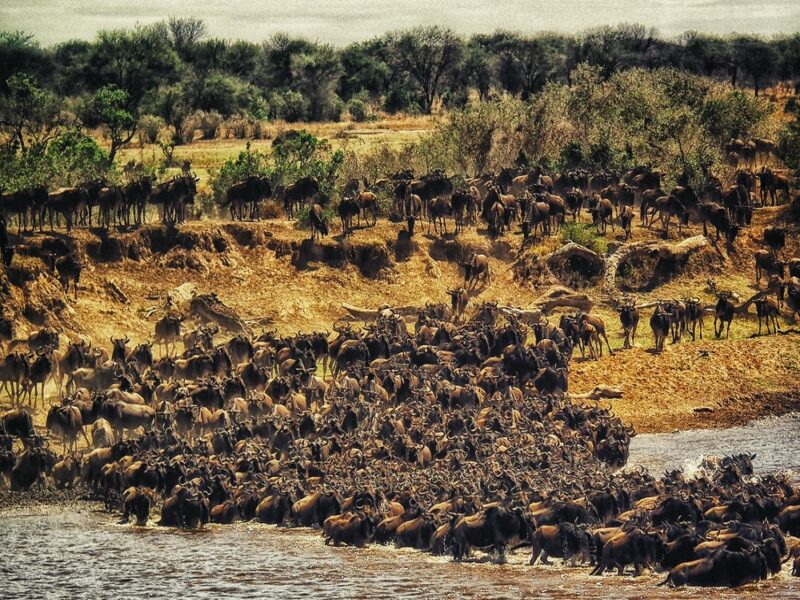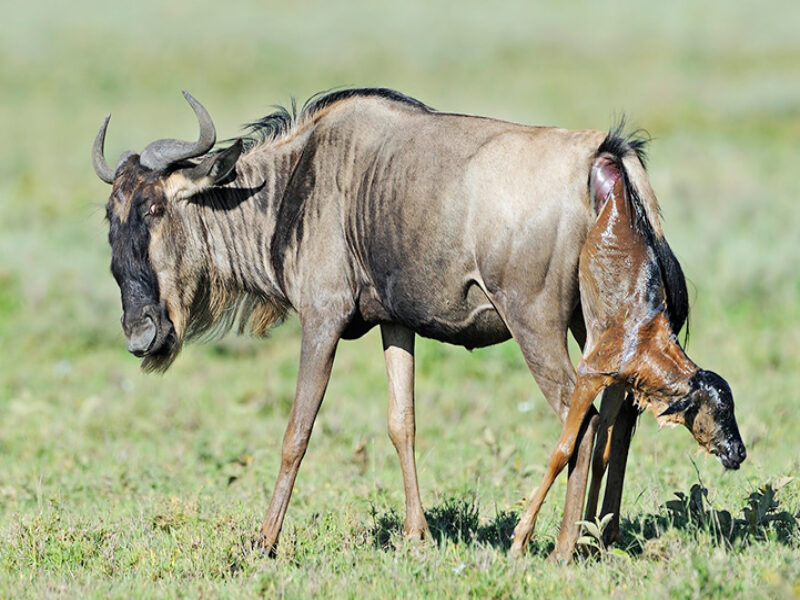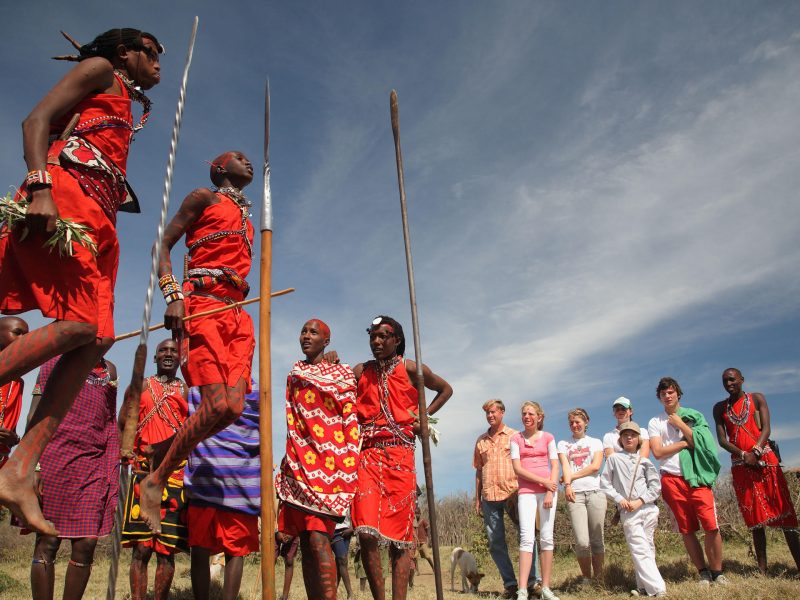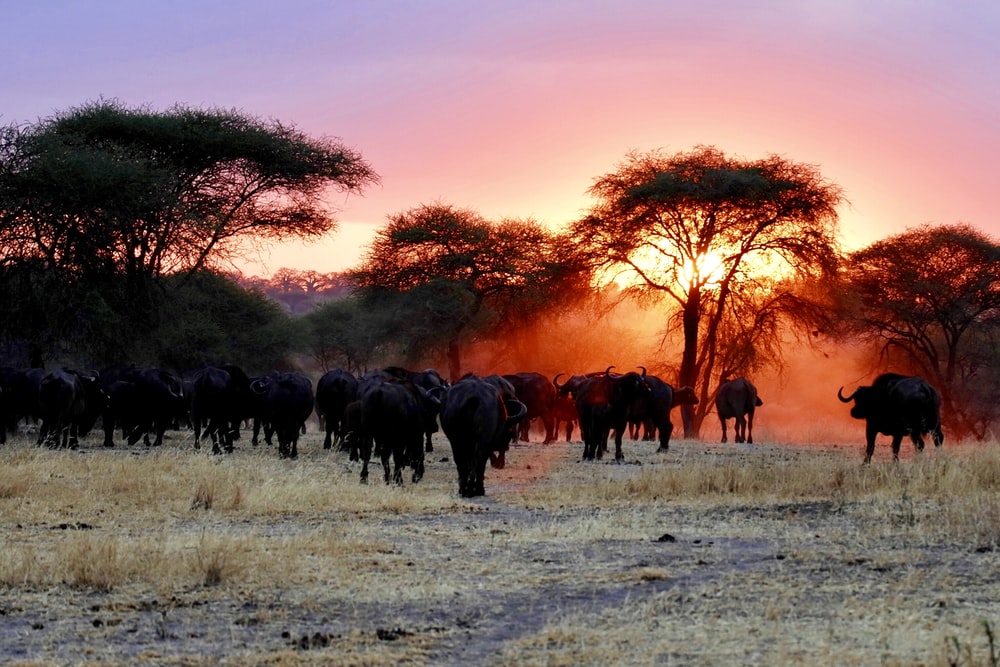While the Maasai Mara National Reserve is located in Kenya, and the Serengeti National Park is in Tanzania, essentially, they are part of the same ecosystem where the wildlife can traverse back and forth.
Both parks offer authentic safari experiences – wide open spaces, stunning landscapes and amazing wildlife sightings. So how do you choose which park to visit? Which park will give you the better experience? There are a number of factors to consider, some of which include the amount of time you want to spend there, the time of year you are travelling, costs and logistics.
Here are some of the factors to consider when planning your trip:
- The Great Migration of wildebeest from the Serengeti to the Mara.
This is an annual occurrence where close to 2 million animals (mostly wildebeest and a lesser number of zebras and gazelles) cross over from the Serengeti to the Mara, in search of fresh pasture and water. They are closely followed by the predators, and this makes for a unique once-in-a-lifetime experience. This phenomenon is well known to potential visitors, and normally takes places from mid June to September, with the dramatic Mara river crossings where thousands of wildebeest plunge into the crocodile infested river, happening in September. Thus, if one is planning to travel during this time, the best place to catch the migration is in the Mara.

Not so well known is the fact that the migration begins in the Serengeti much earlier. Beginning in the Serengeti around March/April, the herds move up from the south towards the north, and this peaks around late May/June where you can witness large herds crossing the open Serengeti plains. They cross over the Grumeti River in June, and this is also an event to mark in your calendar.
On the way back, they return from the Mara to the Serengeti around November, where they move from the northern part of the park to the western corridor upto January.
- The Calving Season
This is the annual calving of wildebeest, that take places in the southern Serengeti from the end of January to mid March. In January as the rains fall, the plains of the Southern Serengeti area turn green and provide enough grazing and nutrition for the calving season. Every day, literally 8,000 wildebeest are born, dropping simultaneously so as to confuse the predators and ensure the best chances of survival for the calves. So, if your travel is scheduled for this time, this is the place to witness rip-roaring predator action.

- Size of the parks
The area of the parks can have an impact on your game viewing experience. Hands down, the Serengeti is bigger than the Mara by a ratio of almost 10:1. So if you are looking for mind-boggling expanses of savanna grasslands, this is the place for you. Bear in mind though, that the wildlife is spread over a much larger area and consequently, you need to spend more time driving around.
Alternatively, the Mara being smaller in size, has a great density of game and if you have only a few days to spare, then the Mara is a better fit as you will see more here in a few days, than in the Serengeti.
The Mara also has additional acreage given over to private conservancies, where quality tourism is the practice. This ensures a better quality of game viewing experiences, which also include activities like game walks, picnics, bush meals and night game drives, which are not available in the main Reserve, nor in the Serengeti.
- Wildlife sightings
As mentioned earlier, it is easier to spot game in the Mara, as the concentration of wildlife here is higher and this holds true all year round. The Mara also has large prides of lions and is considered one of the best places to see cheetah in the world, as well as witness the phenomenal speed of these cats.
The Serengeti is known for its leopard sightings, especially in the central Seronera region. Rhino are pretty scarce in both parks but the Mara Triangle and the Seronera region of the Serengeti offer the best chances of spotting them.
- Accommodation and costs
The Maasai Mara has a wider range of accommodation options, ranging from 3 star to high end luxury outfits, whereas the Serengeti has some mid range options but a higher concentration of high end luxury properties.
So, if budget is a consideration for you, then the Mara offers more choice allowing you to choose an option best suited to your budget.
- Culture & activities
If you are interested in combining culture with wildlife, you can interact with the fierce Maasai tribe that calls the Maasai Mara their home. Experience their culture and learn about their customs and traditions. Visit their villages where you can witness their lifestyle and admire their beadwork.

The Serengeti is not home to the Maasai tribe, though they do offer visits to villages outside the park.
Safari costs are higher in the Serengeti as most of their accommodation options are high end, and furthermore the Serengeti charges a daily concession fee in addition to daily park fees. So, if the daily fee in the Mara is US$ 70 per person, the daily fee in the Serengeti works out to US$ 140 per person. As this concession fee is a tax levied by the Tanzanian government, it does not reflect the quality of the experience.
Both parks offer game drives (normally done in the early morning and late afternoon hours). Game walks, night drives, bush meals are only offered in the Mara Conservancies and Serengeti private reserves & concessions, and not in the main parks. Balloon safaris are offered in the Mara Reserve but not in the Serengeti Park, only in the Serengeti private reserves & concessions. As the Mara has more private concessions, it offers a better quality of safari experience.
- Accessibility
Both parks have good access through air travel and road transportation.
The Maasai Mara is accessible from the capital city of Nairobi by twice daily flights, operated by light aircraft and duration of one hour, as well as by road travel which takes about 5 hours. Nairobi itself is one of the biggest transport hubs in Africa, and flights are available from North America and Europe at affordable rates.
The gateway to the Serengeti is Arusha, the safari capital of Tanzania. There are daily flights from Arusha to the Serengeti. While road travel from Arusha to the Serengeti is an option, this journey takes an average of 6 to 7 hours.
So really the choice of whether to visit the Maasai Mara National Reserve or the Serengeti National Park depends on your requirements.
Ideally, we would recommend that you visit both – to make things easier, there are now flights connecting both parks to give you a seamless safari experience.


Comment (0)